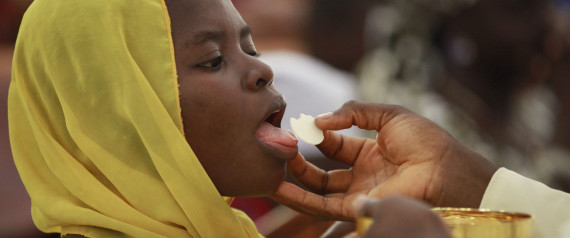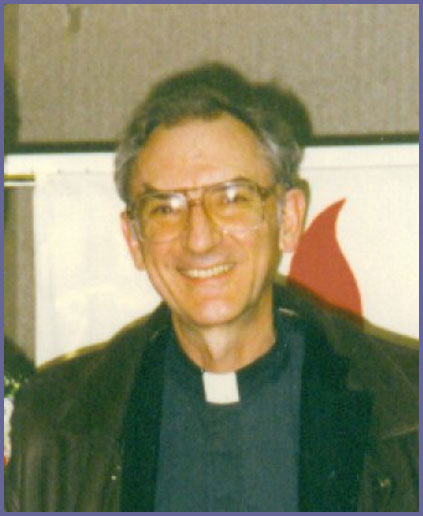Robert T. Sears
by Robert T. Sears, S.J
Family tree healing has come through my interest in psychotherapy and theology. Beginning the study of theology in Frankfurt/Main, I became aware of a personal depression that blocked my feelings and made me anxious about life. I studied psychoanalysis to find the root of the depression, but the more I learned, the more depressed I became. Knowledge, I learned, did not heal. It simply made one more aware of the problem. An article by a fellow Jesuit referred me to Isaiah 43:18ff "Remember not the events of the past..., see, I am doing something new! Now it springs forth, do you not perceive it? In the desert I make a way, in the wasteland, rivers...for my chosen people to drink."
What touched me about that passage was that our creator is now at work, in the very heart of the earth. Healing depends not on what went before (my analysis of beginnings) but on God who makes all things new. My inner dying was actually part of a process grounded in God, a dying to the old as an opening to new life. It was not by understanding causes that I would be healed, but by surrendering my whole depression into the hands of God. God's creativity is infinite and eternal, an eternal Now!
If God creates new now, then, we ought to be able to verify our theology by what concrete effects faith in God produces. In a seminar on Teilhard de Chardin, I studied the history of theology to discover a link between science and theology. That study made it clear that theology always changes with the introduction of new ways of thinking. We find theologies based in Plato and Aristotle and more recently on Schelling, Hegel and Heidegger. What we didn't have was a theology rooted in psychological/social categories which was the thought-frame of our day. Psychodrama was the therapy of most interest at that time in Europe.
It dealt with groups and thus could connect with a theology centered in the Mystical Body. Moreno, the founder of Psychodrama, had a God-experience himself and designed his psychodramatic methods in light of how God would create and bring healing to groups. We are made in the image of God our creator and we are healed by releasing human creativity through freeing our interaction with one another. Experiencing psychodrama, I saw a way to see God's creativity in human interaction expanding to what Moreno called "global psychotherapy."
What was still missing, however, was the right theological link. The theologies I knew (Rahner, Lonergan, Aquinas) were focused on consciousness. But therapy works in the unconscious. What was needed was interpersonal interaction (as in psychodrama), with attention to unconscious dynamics. I found that in the theology of Heribert Muehlen, a German Catholic theologian who had spent most of his scholarly life studying the theology of the Holy Spirit as We in God -- the bond of unity between the first and second persons of the Trinity. Since the Spirit works interpersonally and in the depths of our persons (our "a priori I" as he put it), the Spirit grounds our unconscious as well as our consciousness. My dissertation linked Muehlen’s theology of the Holy Spirit to psychotherapy, using Freud, Jung and Moreno as representative therapists.
Yet theory alone was not my goal. As I was studying therapy and theology, I was also counseling and praying for healing and deliverance. I wanted to see "what difference" God made in healing, and I found by experience that God’s presence made a great deal of difference. God is a powerful help when through analysis we learn what to ask for, and even sometimes when we don't 1. Through involvement in the charismatic renewal from my Fordham days, healing prayer was added to my interpersonal point of view.I began teaching at the Jesuit School of Theology in Chicago in 1972, and there I was introduced to the healing of family systems by Dr. David Augsburger of Bethany School of Theology. In a team taught course, he introduced me to the work of Murray Bowen and family systems therapy. Bowen had begun inviting the family of his clients to Menninger's Clinic in Kansas. The clients would act out when the parents fought.
He began to see the client's mental illness as an effort to assuage a dysfunctional relation between the parents, and when he worked with the parents alone, the client would often be healed. I was intrigued. Here was an area of therapy that could give me controlled data to correlate with my interpersonal view of the Holy Spirit 2 . I began to pray not only for the individual, but for his or her family--and gradually for his or her ancestors. The whole extended human family needed healing, reaching all the way back to Adam and Eve.
This extended view led me to see the importance of the resurrection of Jesus, and ultimately to pray for healing the earth. In working on Mary's assumption in light of Jesus' resurrection, I came to see that through the resurrection Jesus was made "Lord," that is, he sits at the right hand of God and shares God’s rule. Since God transcends our notion of past and future in an eternal NOW, the resurrection must be bringing Jesus in his humanity into the eternal NOW of God!
That is why Scripture could call Jesus the "new Adam" and speak of his preaching to the souls who were dead (see 1 Pt 3:19-22; 4:6) and their being saved. He could heal even the dead by the power of God to raise Christ from the dead. I experienced families getting free as we prayed for their wounded ancestors in the power of Jesus' resurrection.
This prayer for ancestors in the power of Jesus' resurrection brought me to pray for institutions and even the earth and to see the power of the resurrection to bring healing to the earth. Institutions like the church and particular cultures and societies are also influenced by their histories, as is the earth itself which has been wounded by human sin. Family tree healing grew to include the whole human family and the earth itself that is our home.
The importance of prayer for healing in human systems is still not widely known. My hope is that by initiating this website, I can contribute to a better understanding of this essential dimension of healing and provide links to further resources. God has to break into our history with a “new family.” My books on Mary, Opening to God, and on John’s Gospel, Into the Heart of God, give theological underpinnings for the “New Eve” and “New Adam” that ground that new family.
My articles on “Healing and Family Spiritual/Emotional Systems” and “Trinitarian Love and Male-Female Community,” present a fundamental, developmental point of view to direct this healing. My article on “Resurrection Spirituality and Healing the Earth” expands that perspective to include the earth and clarifies the universal importance of Jesus’ resurrection. Other articles are included to clarify various aspects of this approach, and other articles will be added as the site grows.



No comments:
Post a Comment